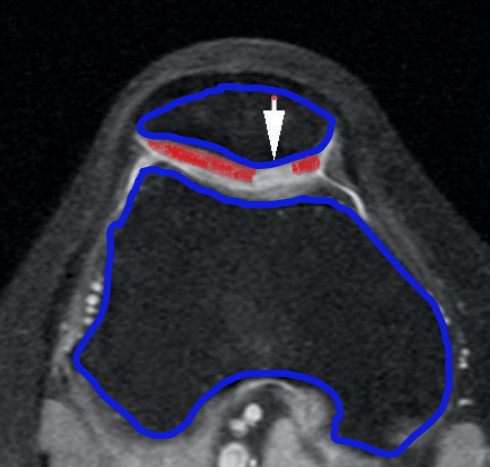
Cartilage Damage

Common Cartilage Problems: Symptoms
Cartilage Damage, Injury, or Wear-and-Tear
Causes of Cartilage Damage
Cartilage Damage can take many forms. This may be an acute injury, such as in a sporting injury or car accident, or a progressive damage, like wear-and-tear due to degeneration.
Unlike skin for example, cartilage does not heal well on its own once it is damaged beyond a certain point. Such problems can then be treated with a variety of ways.
The most common knee cartilage problem is that of progressive wear-and-tear. This happens due to a person’s aging, though different people may have it at different ages. Sometimes, it happens because of previous injuries to the knee, and over time the cartilage wears down. Cartilage damage also frequently occurs acutely due to a sports injury or a car accident.
Cartilage is normally a 2mm thick layer of tissue covering the hard bone in the knee. Cartilage allows a person to walk, run and climb stairs smoothly.
Cartilage damage causes a person to feel pain in the knee. The pain is usually activity-related, meaning pain after more walking or running. Sometimes it causes pain during the activity itself such that the person is not able to continue running or exercising. Frequently there is pain when on stairs, or pain and stiffness when getting up after being seated for a while. When the pain occurs, it may last short periods (for example 30min), or it may last a few days.
Various forms of Cartilage Damage and Severity
Cartilage damage has different forms and degrees. For example, a common type is a general softening of the tissue with no tears (known as Chondro-Malaciae Patellae), whereas another type is damage of the superficial layers. More severe types include more widespread, ‘geographic’-type wear, or full-thickness cartilage loss, known as ulcers. Classification systems exist but importantly, how bad a condition is depends on various aspects, including what the patient feels, the extent of cartilage damage on Xrays and MRI, and the dynamic movement of the knee. In certain cases, in-born issues with the kneecap (tight ilio-tibial band, patella tilt) leads to cartilage damage.
Your Orthopaedic Surgeon should be able to consider these different factors and advise you on the severity of your condition and the available treatment methods.
Does cartilage damage heal on its own?
In general, cartilage tissue does not heal well on its own once it is damaged beyond a certain point. Therefore, if there is already structural damage such as ulcers or tears, this may not heal on its own. Milder cases such as cartilage softening (Chondro-Malaciae Patellae) and small partial-thickness cartilage damage generally can recover on its own with a period of rest from strenuous activities, physiotherapy and collagen supplements. However, this also depends on whether the patient has any in-born issues with kneecap movement, which will also make it more difficult for the condition to recover.

How do we treat such problems?
The most important thing in assessing such problems is with a detailed analysis of each patient’s condition. We do this by taking a detailed account of what the patient feels, examining the dynamic movement of the knee and kneecap, and doing an xray and/or MRI scan. Thereafter, treatment is formulated taking into account the condition and the patient’s circumstances and expectations, ie an individualised treatment.
Chondro-Malaciae Patellae (CMP) cases and pain due to kneecap maltracking do generally respond to a period of rest and physiotherapy with or without some collagen supplements. Physiotherapy is a very useful adjunct for knee cartilage problems and work by re-balancing the muscles around the knee, so avoiding the painful motions, which then allows the cartilage to recover. However, this also depends on the extent of any in-born issues such as tight ilio-tibial band, which can cause persistent pressure on the damaged cartilage.
More advanced cases may benefit from injection methods, involving injection of a lubricant gel and bone marrow supplementation. This serves to stimulate healing of the cartilage and temporarily improve the mechanics of kneecap movement, thus allowing time for physiotherapy to work. Cases with significant structural damage of the cartilage, such as ulcers or large areas of cartilage damage, will be most effectively treated with direct repair of the cartilage through a Key-Hole procedure. Such treatment resolves the patient’s current pain, allows return to lifestyle and activity, and prolongs the lifespan of the knee, thus delaying or preventing a possible knee replacement in future.
Centurion Orthopaedic Centre
38 Irrawaddy Road
Mt Elizabeth Novena Hospital Specialist Centre #07-40
Singapore 329563









